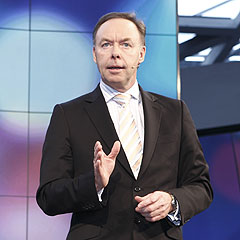Porsche imports cars and exports wine in Argentina
BY JAMES STANFORD | 24th Nov 2011

Argentina is latest country to introduce a non-tariff barrier, which has already restricted imports of some models to the country.
Its new policy, which was introduced late last year, requires importers to buy local products or commodities to the same value of what they are importing, and then export them.
This dollar-for-dollar program has already hurt some importers such as BMW which struggled to find enough appropriate products to buy and export.
BMW global sales and marketing chief Ian Robertson said BMW would export items suitable for the automotive industry, such as leather, but there wasn’t much on offer.
“What they do have seems to be operating toward the commercial (vehicle) end of the business,” he said.
“There are a lot of trucks and things like that there.”The trade rule has even forced some importers to buy non-automotive products to ensure it can continue bringing in its models.

“Many of the importers are exporting strange things,” he said. “Porsche are exporting wine.”BMW sold about 4000 cars in Argentina last year and admits it could have moved more had it not been for the trade restrictions.
In September, Brazil introduced a fresh increase on taxes for vehicles with less that 65 per cent of components sourced from Brazil, Argentina and Paraguay, rising from seven to 25 per cent depending on the type of vehicle. This means tax rates on imported vehicles can be as high as 55 per cent.
“They (Brazil) are another one that has put in a framework of local content, local manufacturing,” Mr Robertson said.
“What you are seeing around the world is more of these localised packages coming together.
“The agenda of more local national positions is something that has become more of a norm.”Mr Robertson said the policies were not limited to South America.
“The Russians came up with rule 166 which now has local plants, local capacities the Indians have got it, the Chinese have been driving down this road since day one.”The introduction of new trade protection policies comes after Australia cut its vehicle tariffs from 10 per cent to five per cent at the start of last year and considers a new free trade pact in the form of the 10-nation Trans-Pacific Partnership along side its existing free-trade deals with Thailand and the US.